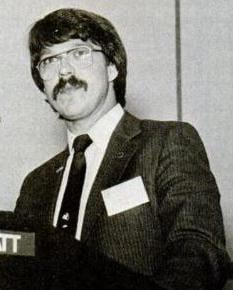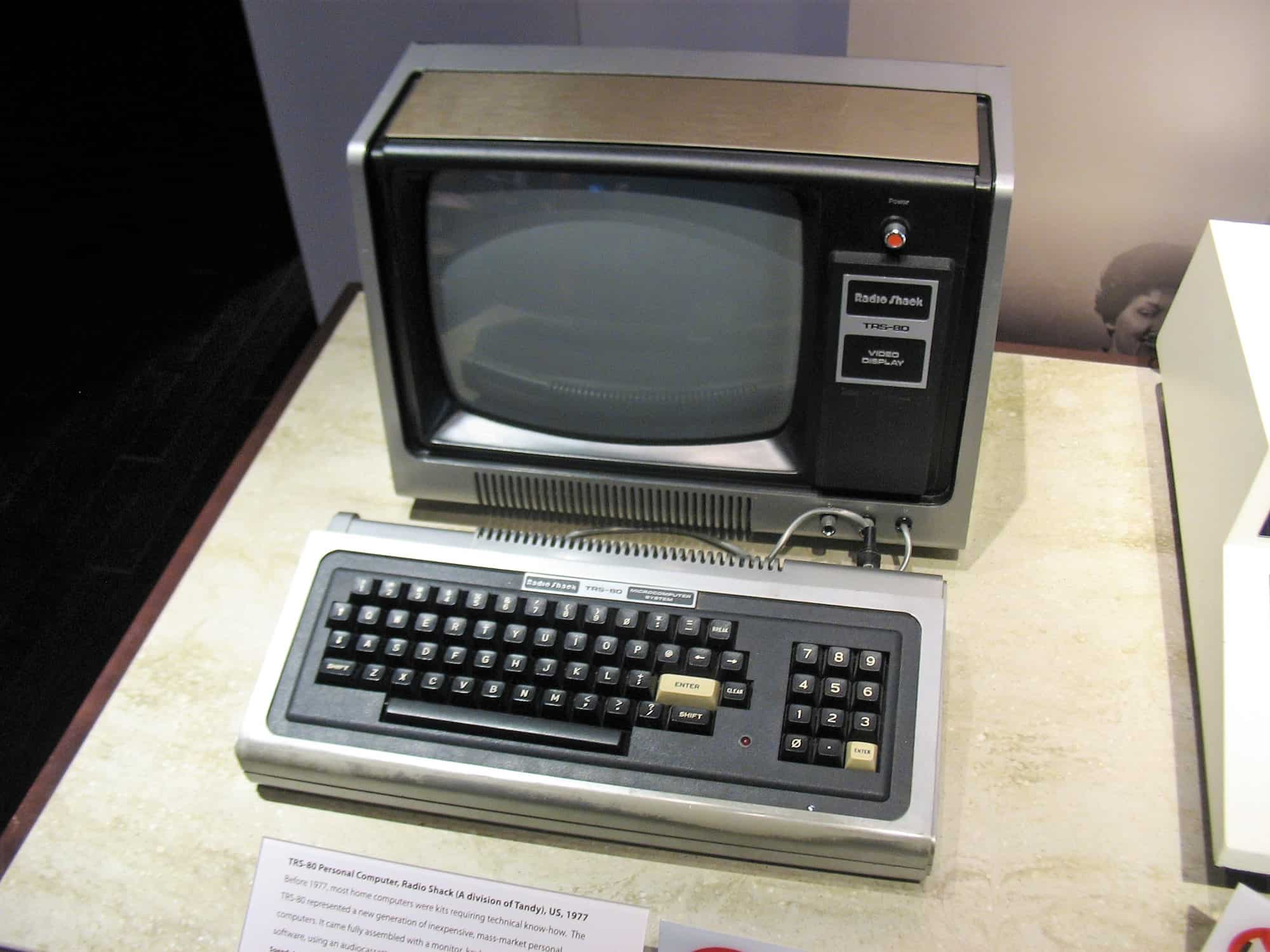
5 Facts About The TRS-80:
- The first units were delivered in November 1977, unseen, and went on sale in the third week of December. Hobbyists, home users, and small companies flocked to the line. Tandy Corporation’s commanding position in the “1977 Trinity,” as described by Byte magazine.
- Tandy/Radio Shack was marketed as “The Biggest Name In Little Computers” by 1978.
- In 1979, 1,600 people worked in six factories to develop computers. Tandy supplied three times as many computers as Apple Computer in 1980, according to Kilobaud Microcomputing, and both firms were ahead of Commodore.
- Tandy claimed it had “7000 [Radio Shack] stores in 40 countries”. The pre-release price for the basic system (CPU/keyboard and video monitor) was US$500, and a US$50 deposit was required, with a money-back guarantee at the time of delivery.
- Many arcade-style games are accessible on the Tandy TRS-80, thanks to software designers’ efforts, including the fact that the TRS-80 came with blackjack and backgammon, and Radio Shack supplied four payroll, personal finance, and instructional programs on tape when it first came out.
Where to Buy?
The TRS-80 Model 4 is currently being sold on eBay under the category of vintage computers.
The History of TRS-80 Computer: What To Know
In 1975, Don French, a buyer for the company Radio Shack (a successful American chain of electronics stores owned by Tandy Corp.) on the West Coast, purchased a MITS Altair computer, which he used for inventory control. He became so fond of the new toy that he began designing his own kit. He tried to convince the vice president of manufacturing John Roach, the company, to develop and sell such a device. This was the initial stage in the development of the TRS-80 Computer.
In November 1976, TRS hired the 24 y.o. nerd Steve Leininger, to design the machine. He was then working for National Semiconductor (and a member of the Homebrew Computer Club, just like Apple’s Steve Jobs and Steve Wozniak and Lee Felsenstein of Osborne-1).

TRS-80: The Idea
In December 1976, French and Leininger received official approval for their project. In February 1977, they showed their prototype, running a simple tax-accounting program, to Charles Tandy, the owner of Radio Shack’s parent Tandy Corporation. A funny incident happened during the demonstration as the big boss was asked to enter a salary, and he entered 150000, but the variable for this figure was a 16-bit integer; thus, the program crashed miserably.
So Mr. Tandy was kindly asked to enter a number up to 32000 in order to get the program working 🙂 It was somewhat confusing for the constructors to make such an underestimation of their boss’ salary (and to miss a validation check for the input), but nevertheless, Tandy gave “OK” to the project, so TRS-80 Computer (“TRS” stood for “Tandy Radio Shack” and the “80″referenced the microprocessor, the Z-80) was announced at a press conference in August, with first orders shipped in September 1977.
From Idea to Development
French and Leininger suggested that the company could sell 50000 computers, but more skeptical executives disagreed and suggested 1000 to 3000 per year. Roach persuaded Tandy to agree to build 3500 (the number of Radio Shack stores), so that each store could use a computer for inventory purposes if they did not sell.
Suddenly (for the bosses), in several days, over 15000 people called Radio Shack to purchase a TRS-80, paralyzing its switchboard. Still forecasting 3000 sales a year, the company sold over 10000 TRS-80 Model Is in its first one and a half months of sales, and over 200000 during the product’s lifetime. The model I went on to become the best-selling microcomputer for several years, and in 1979, it had the largest available selection of software in the microcomputer market.
TRS-80 Versions: Model III and Model 4
TRS-80 – Model III
Model III was announced in July 1980, which was a generally compatible successor for the Model I. Built-in lower case, a better keyboard, the elimination of wire spaghetti, a 1500-baud cassette interface, and a faster (2.03 MHz) Z-80 CPU were among the improvements over the Model I.
The model I manufacture was halted with the release of the Model III because it did not meet with new FCC electromagnetic interference standards that went into effect on January 1, 1981. The Model III could run around 80% of Model I software. However, the disc format was incompatible. It also had the possibility of having built-in disc drives.
Quick Facts
- Release Date
- 03/08/1997
- Original price
- $399
- Discontinued
- 01/01/1981
- Units Sold
- 100000
On Model I, the first 16 kB of memory is taken up by the OS ROMs, I/O region, visual memory, and OS workspace. Subject to the quantity of physical RAM installed, the remaining 48 kB of the 64 kB memory map area is accessible for application usage. Apart from the cassette tape and RS-232 serial ports, the Model I’s I/O is memory-mapped, despite the Z80 CPU’s ability to use port-based I/O.
TRS-80 – Model 4
The business reported that the Model I was still being sold after the Model III was introduced in mid-1980 but would be phased out by the end of the year. The exorbitant expense of reworking it to meet tougher FCC laws covering the substantial amounts of radio-frequency interference created by the original design, according to Tandy, is one of the key reasons.
The successor, the Model 4 microprocessor, had a faster Z80A 4 MHz CPU with 64 kilobytes of RAM as standard on disk-based Model 4s; an optional bank of further 64 kilobytes was accessible to applications software through bank switching technology.
A bigger display panel with 80 columns by 24 rows, reversed video, and an integrated audio speaker was among the additional hardware features of the Model 4. In addition, it has three function keys and a control key on its keyboard.
TRSDOS Version 6 is an entirely new operating system evolved from the sophisticated Model III LDOS 5, licensed from Logical Systems. A more current version of Microsoft’s BASIC interpreter, with PC-like features, resembles the MS-DOS GW-BASIC.
The Public Response to TRS-80 Computer
On August 3, 1977, Radio Shack revealed the TRS-80 Computer (Tandy Radio Shack) at a New York City press conference after spending less than $150,000 on development. It cost $399 ($1704 now) or $599 ($2558 today) with a 12″ display and a Radio Shack tape recorder; the previous most costly product produced by Radio Shack was a $500 stereo.
According to the business, the new computer was supposed to help Radio Shack sell higher-priced items and enhance its “schlocky” reputation among customers.
Small companies were the major target market, followed by educators, consumers, and hobbyists; despite its hobbyist client base, the company’s primary target market was small enterprises. Even though the press presentation was overshadowed by a terrorist explosion elsewhere in the city, the computer gained far more attention at Boston University’s Personal Computer Fair two days later. It further on went and sold 100,000+ units (As of October 1979)
The TRS-80 Model I with an expansion unit and a floppy disk
So, what made the TRS-80 such a market hit?
1. The price. TRS-80 was announced at 399 USD, or 599, with a 12″ monitor and a Radio Shack tape recorder as data cassette storage, while its direct rivals, like Commodore PET, were announced at 795 USD, and Apple II was announced at 1298 USD.
2. The massive market invasion. Commodore PET was announced several months earlier but had not yet shipped. Moreover, Radio Shack uses more than 3500 electronics stores to distribute the machine.
3. TRS-80 was a technically sound machine. It featured a Zilog Z80 processor clocked at 1.77 MHz, 4 KB of RAM, Cassette I/O and video ports, a 12-inch monochrome monitor (64 X 16 text), and the operating system was BASIC in ROM.
The serious users eventually purchased the $299 Expansion Interface (see the attractive external module which sits under the monitor), which offered many improvements over the basic TRS-80 like: Printer port; Floppy disk controller (up to 4 drives); Expansion port; Optional serial port; Up to 32K additional RAM; Two tape drive connectors; Signals for a real-time clock.
NEXT UP…
- Simon Electronic Brain Explained — Everything You Need To Know
- Xerox Notetaker Guide: History, Origin, and More
- Macintosh by Apple – Complete History of Mac Computers
The image featured at the top of this post is ©Around the World Photos/Shutterstock.com.







